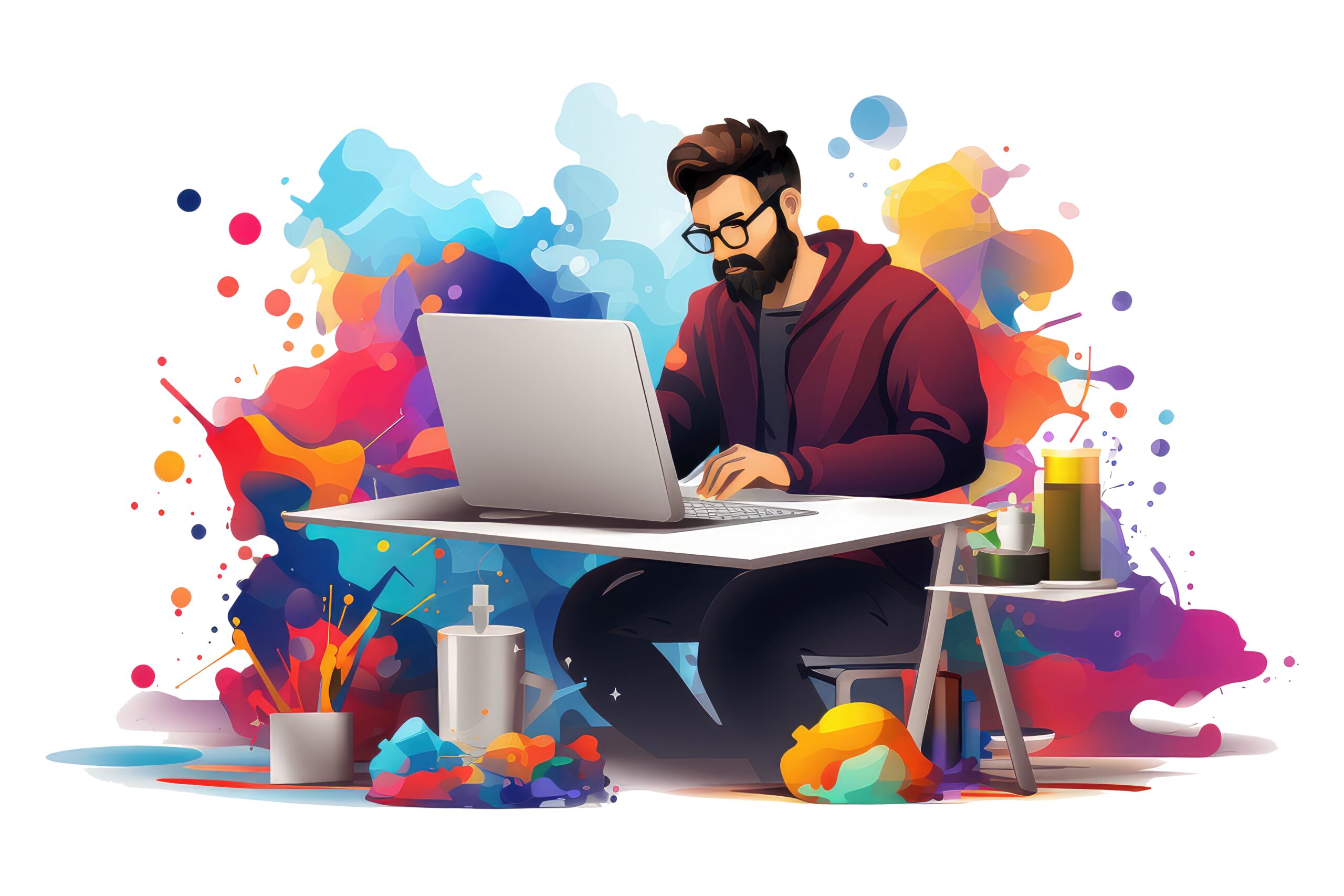
The Graphic Designer vs. Creativity: A Battle of the Muses?
When you hear the term “graphic designer,” what comes to mind? A person hunched over a glowing screen, meticulously arranging fonts and images? Someone who creates logos and posters? While these images hold a kernel of truth, they often miss the heart of the matter—the intricate, and sometimes tense, relationship between a graphic designer and the elusive force we call “creativity.”
Many people mistakenly believe that graphic design is simply a matter of technical skill, a paint-by-numbers approach to aesthetics. You learn the software, you master the principles, and presto you’re a designer. On the other side of the coin, creativity is often romanticized as a wild, untamed spirit, a sudden spark of inspiration that has no rules or boundaries.
But what happens when these two worlds collide? The truth is, they don’t collide. They’re two sides of the same coin, and the most successful graphic designers are masters of both.
The Designer’s Toolkit: Rules, Grids, and Constraints
A graphic designer’s job is not to simply “be creative.” It’s to be creative within a framework. A designer’s toolkit isn’t just software; it’s a deep understanding of principles:
Color Theory: Knowing how colors interact and influence emotion.
Typography: Understanding the psychology of fonts and how to use them effectively.
Composition: The art of arranging elements to guide the viewer’s eye.
The Grid: The invisible backbone of almost all good design, providing structure and balance.
These aren’t creative handcuffs; they’re the rules of the game. A great designer uses these constraints not to limit their imagination, but to channel it. A blank canvas is intimidating; a blank canvas with a clear objective and a set of tools is a playground.
The Creativity Myth: The Spontaneous Spark
Creativity, especially in a professional context, is rarely a lightning bolt from the sky. It’s a muscle that needs to be exercised. For a graphic designer, creativity isn’t just about coming up with a “cool” idea. It’s about:
Problem-solving: A client comes to you with a need: “We need a logo that feels modern and trustworthy.” A designer’s creative challenge is to solve that problem visually.
Empathy: The designer must put themselves in the shoes of the target audience. What will resonate with them? What will make them feel a certain way?
Curiosity: The best designers are constantly looking for inspiration in art, nature, culture, and the work of others.
Iteration: Creativity is often a messy process of trying, failing, and refining. The first idea is rarely the best one.
The Synthesis: Where Design and Creativity Meet
So, it’s not a battle; it’s a beautiful, symbiotic relationship. The graphic designer is the architect, and creativity is the vision.
Creativity provides the “what”: The big idea, the unique concept, the emotional core.
Design provides the “how”: The execution, the structure, the polished final product that communicates that idea clearly and effectively.
The most powerful designs are the ones that blend these two elements seamlessly. Think of a classic brand logo—the Nike swoosh, the Apple logo. They’re not just random shapes; they are carefully crafted, geometrically precise designs that have a powerful, creative meaning behind them.
Ultimately, a graphic designer isn’t an artist who simply “creates.” They are a visual communicator, a problem-solver, and a master craftsman who uses creativity as their most powerful tool. The next time you see a great design, don’t just see the lines and colors. See the creativity that was carefully harnessed, directed, and brought to life by a skilled hand.
